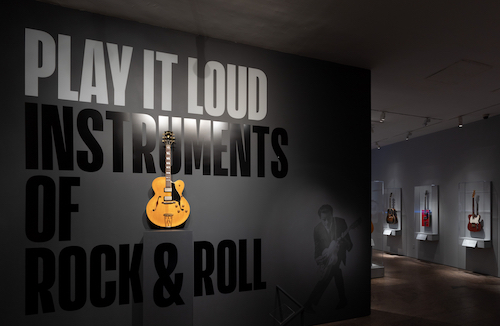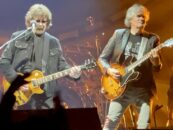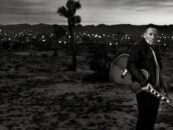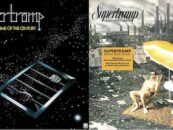 More than 130 instruments used by such artists as Chuck Berry, The Beatles, Elvis Presley, Jimi Hendrix, Jimmy Page, the Rolling Stones, and many others will go on view at The Metropolitan Museum of Art in New York beginning April 8, 2019. It’s said to be the first major loan exhibition in an art museum dedicated entirely to the iconic instruments of rock and roll.
More than 130 instruments used by such artists as Chuck Berry, The Beatles, Elvis Presley, Jimi Hendrix, Jimmy Page, the Rolling Stones, and many others will go on view at The Metropolitan Museum of Art in New York beginning April 8, 2019. It’s said to be the first major loan exhibition in an art museum dedicated entirely to the iconic instruments of rock and roll.
From the original November 20, 2018, announcement: Play It Loud: Instruments of Rock & Roll will explore one of the most influential artistic movements of the 20th century and the objects that made the music possible. Drawn from 70 private and public collections in the United States and the United Kingdom, most of the objects in the exhibition have never been shown outside of their performance contexts.
Related: Our April 2019 preview of the exhibit
Watch a preview of the exhibit, which aired March 31 on CBS This Sunday Morning
Organized thematically, Play It Loud will include many of rock’s most celebrated instruments, including such guitars as Eric Clapton’s “Blackie,” Eddie Van Halen’s “Frankenstein,” and Jerry Garcia’s “Wolf,” as well as Keith Emerson’s Moog synthesizer and Hammond organ, and drums from Keith Moon’s “Pictures of Lily” drum set, to name a few.

The Beatles’ iconic Ludwig drum kit, on display at The Met Museum
By displaying several rigs used in live performances and sound recordings, the exhibition will also demonstrate how artists created their own individual sounds. The instruments will be complemented by some 40 vintage posters, striking stage costumes, and epoch-making videos.
The exhibition, scheduled to run through October 1, 2019, is made possible in part by the Estate of Ralph L. Riehle, the William Randolph Hearst Foundation, and Diane Carol Brandt.
It is organized by The Metropolitan Museum of Art and the Rock & Roll Hall of Fame.
With objects dating from 1939 to 2017, the exhibition, together with its catalogue, will examine many ways in which rock and roll musicians used their instruments. The exhibition will highlight themes such as emerging technologies and how they were embraced by musicians, the phenomenon of the “Guitar Gods,” crafting a visual identity through the use of instruments, and even the destruction of instruments in some live performances.
Highlights of the exhibition will include: Chuck Berry’s electric guitar ES-350T (1957), which was his primary guitar from 1957 until about 1963 and was used to record “Johnny B. Goode”; Jimi Hendrix’s electric guitar “Love Drops,” originally decorated by him; Keith Emerson’s keyboard rig, consisting of the customized Moog Modular Synthesizer, electric tone-wheel organ, and rotary speakers; a reconstructed performance rig from Eddie Van Halen as it appeared onstage in 1978; Steve Miller’s electric guitar that was painted with psychedelic designs by artist Bob Cantrell by 1973; Jack Bruce’s electric bass, which was painted for him by the artist collective known as “The Fool” in 1967 while he was with Cream; and Jimmy Page’s dragon-embroidered costume (Los Angeles, 1975)—the elaborately hand-embroidered suit took over a year to complete and Page wore it during Led Zeppelin’s live performances from 1975 to 1977.
The exhibition will also include a sculpture made from what was left of one of Pete Townshend’s electric guitars after he smashed the instrument during a photo shoot with Annie Leibovitz, that was published in Rolling Stone as “How to Launch Your Guitar in 17 Steps.”
The exhibition is organized by The Metropolitan Museum of Art and the Rock & Roll Hall of Fame, where it will travel to in November 2019.






No Comments so far
Jump into a conversationNo Comments Yet!
You can be the one to start a conversation.